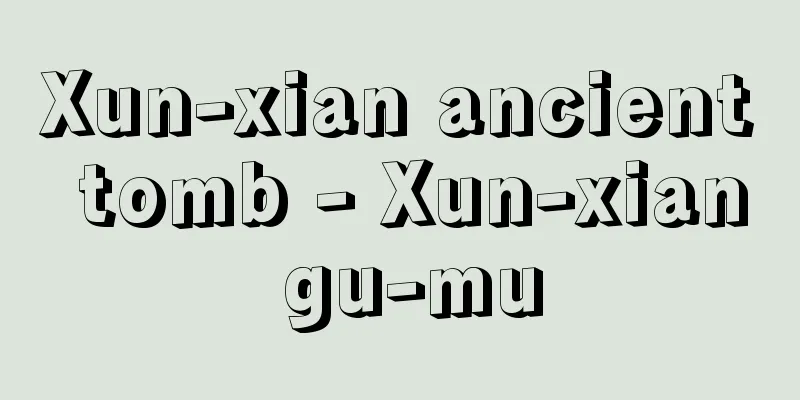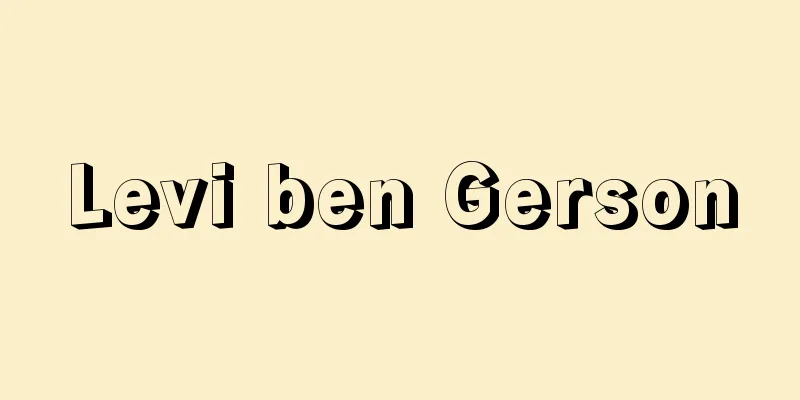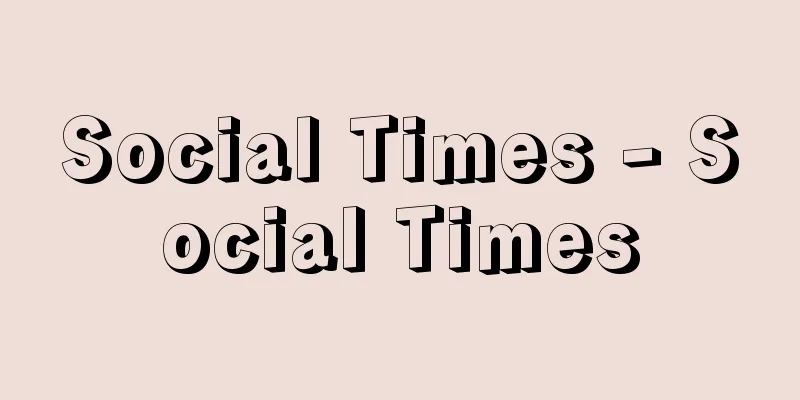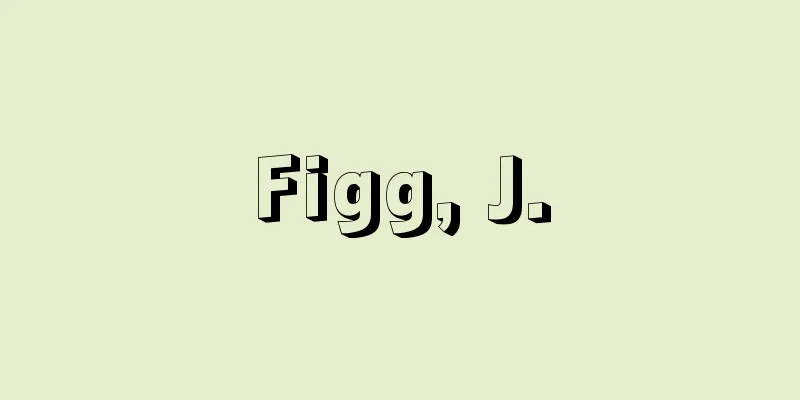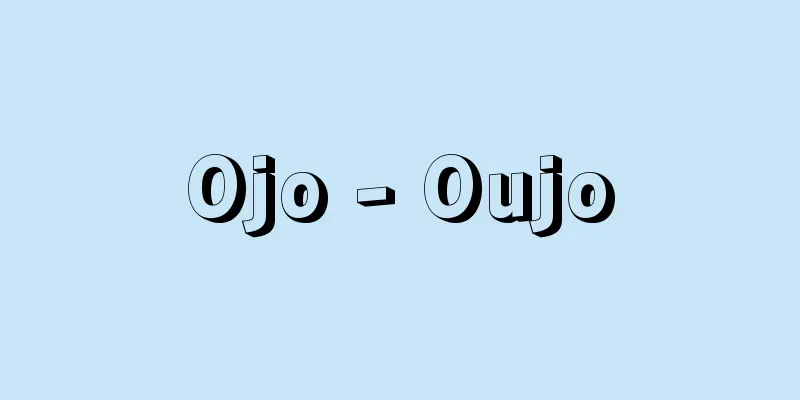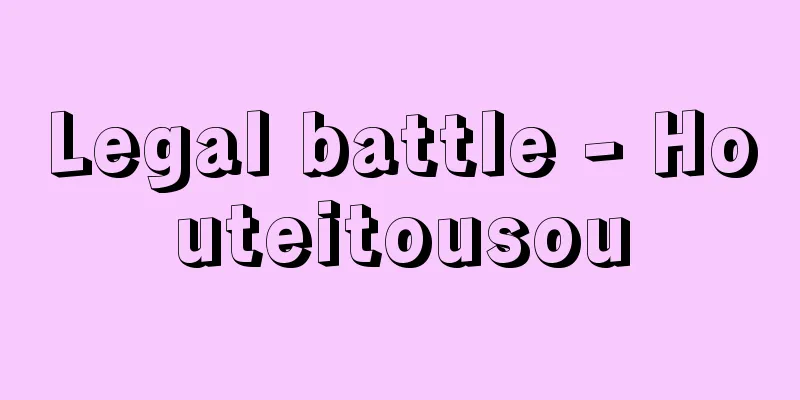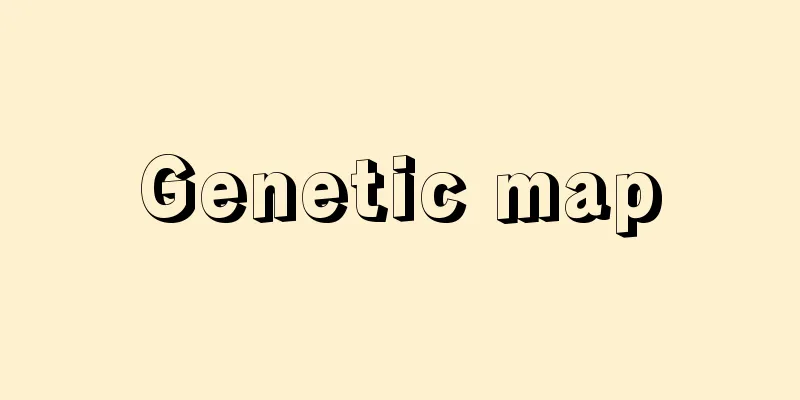Poor Law - Kyuhinho
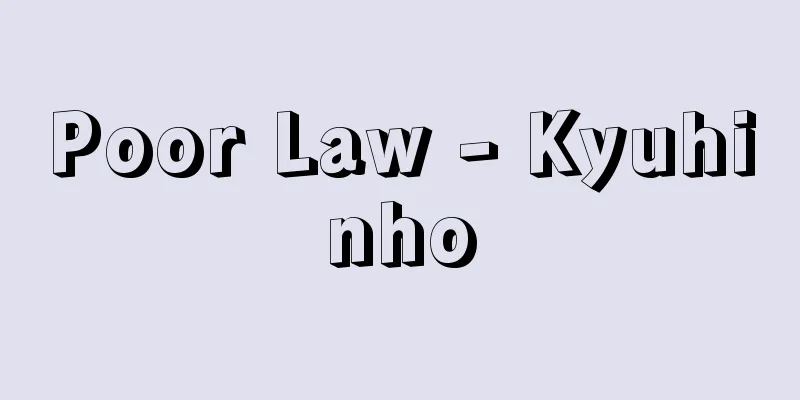
|
A general term for laws that stipulate state relief for the poor. They appeared in the early days of capitalism and served as the mainstay of poverty measures for a long time until the establishment of modern public assistance legislation. The targets and methods of relief varied by time and country, but a common feature of all poor laws was that they denied the right to protection and relief and limited its content to the level of charitable relief. [Toshikazu Yokoyama] English Poor LawThe English Poor Law, which has the longest history, was created against the background of the emergence of a large number of propertyless poor people in the process of original accumulation, their transformation into beggars, thieves, and vagrants, and the resulting increase in social unrest. Henry VIII's 1538 Act had the main purpose of prohibiting vagrancy and begging, but it recognized the existence of incompetent poor people and began to provide relief for the poor by stipulating that magistrates beg for permission. This Act is generally considered to be the earliest Poor Law. After that, although it was bundled with the oppression of the poor, it differentiated those who were willing to work, the elderly, and the incompetent from those who were not willing to work, and expanded protection for them, while the system of covering poor relief funds with the poor rate became common. The culmination of this trend was the Elizabethan Poor Law of 1601. The law stipulated that parishes would take responsibility for finding employment for the poor and destitute children, and for providing relief to the incapacitated, elderly, blind, etc. At the same time, it stipulated that poor people who were unwilling to work would be placed in penal wards or prisons, confirming the continuation of previous repressive policies. The Civil Revolution destroyed the absolutist poor relief administration and left poor relief to the discretion of the parishes. Under this, the workhouse system spread throughout the country (institutionalized by the Workhouse Test Act of 1722). The purpose of this system was to make the able poor work and use the profits to pay for relief. However, the work and life there were extremely miserable, and workhouses turned into "houses of horror." Furthermore, faced with the increase in the new poor class due to the progress of the Industrial Revolution at that time, the limitations of the system became apparent. In 1782, the Gilbert Act was enacted, which allowed the improvement of workhouses into accommodation facilities and the provision of outside relief, and based on this act, the Speenhamland System was born, which implemented wage subsidies and employment mediation. However, these also rationalized low wages and increased poor taxes, which ended up worsening the situation. The New Poor Law of 1834 rejected the humanitarianism of the Poor Law and carried out fundamental reforms in the direction of strengthening relief restrictions. The law prohibited out-of-hospital relief, institutionalized the workhouse test, and set out a direction for national unification of treatment of the poor and centralization of poor relief administration. Although strict enforcement of the law was not achieved due to opposition from workers, its policy of strict demands for self-reliance and self-help was widely adopted even after the mid-19th century, and the law remained in place until the enactment of the National Assistance Act of 1948, despite being amended several times. [Toshikazu Yokoyama] JapanJapan's public poor relief system dates back to before the Meiji era, but legislation that could be called a Poor Law only appeared after the Meiji Restoration unified poor relief administration nationwide. Its origins can be found in the 1874 (Meiji 7) "Poverty Relief Regulations." However, these regulations were extremely restrictive, only targeting those who were extremely poor and had no dependents (sick and disabled people over 70 years old who could not work, and children under 13 years old), and were, in a sense, merely a continuation of feudal poor relief laws. There were several attempts to improve the system after that, such as the 1899 Poor Relief Bill and the 1902 (Meiji 35) Poor Relief Bill, but all of them were abortive, and in the end, the system continued for over half a century without any real effect. Due to the widespread poverty and growing social unrest after World War I, which was exacerbated by the Great Depression, the creation of a new poor relief system was inevitable, and the Relief Law was enacted in 1929 (Showa 4). This law established the obligation to provide public assistance for the first time, and made it clear that the responsibility for providing poor relief rested with the state. However, in reality, it merely expanded and clarified the content of the Relief Law a little, and did not go beyond the scope of limited assistance that was based on the denial of rights and the idea of charity. The defeat in the Pacific War and the occupation by the Allied Forces brought a new situation to the relief of the poor. Immediately after the war, in order to address the serious poverty of the people, the government decided on the "Principles for Emergency Assistance for the Needy" based on a memorandum from GHQ (Supreme Commander for the Allied Powers), and began implementing protection administration while also starting to integrate existing related laws. In 1946 (Showa 21), the Public Assistance Act (old law) was enacted, realizing a modern public assistance law. While this law adopted state responsibility for protection, non-discriminatory and equal treatment, and minimum standard of living guarantees, on the other hand, it had aspects that could not completely eliminate the ideas and principles of the relief law, such as provisions for ineligible persons. Therefore, after the establishment of the new constitution, it became necessary to reorganize the law by adjusting it to the provisions of the constitution and to clarify the standards for protection, and a revised law (the new "Public Assistance Act", Law No. 144 of 1950) was enacted in 1950, and the old law was abolished. [Toshikazu Yokoyama] "The History of Social Welfare, edited by Kikue Migita, Takeshi Takazawa, and Takayoshi Furukawa (1977, Yuhikaku)" ▽ "The History of Social Work in the West, by Michio Koyama (1978, Koseikan)" [Reference] | | | |Source: Shogakukan Encyclopedia Nipponica About Encyclopedia Nipponica Information | Legend |
|
貧民に対する国家の救済を定めた法律の総称。資本主義の初期に登場し、近代的な公的扶助法制が確立するまで、長い間貧困対策の主柱をなしてきた。救済の対象、方法などは時期、国により異なるが、保護・救済の権利性を否認し、その内容を慈善的な救済のレベルに押しとどめてきた点は、救貧法全体に共通した特徴である。 [横山寿一] イギリスの救貧法もっとも長い歴史をもつイギリスの救貧法Poor Lawは、本源的蓄積過程での大量の無産貧民の発生と、彼らの乞食(こじき)、盗賊、浮浪者への転化、そのことによる社会不安の増大、という事態を背景として生成した。ヘンリー8世の1538年法は、浮浪と乞食の禁止を主たる目的とするものではあったが、無能力貧民の存在を認め、治安判事による乞食の許可を定める形で貧民救済に着手した。同法は、一般に、もっとも初期の救貧法とされている。以後、貧民への弾圧と抱き合わせではあるが、労働の意志をもつ者、老人、無能力者などを労働意欲のない者とは区別し、彼らへの保護を拡大するとともに、救貧財源を救貧税poor rateによってまかなう方式が一般化していく。このような方向を集大成したのが1601年のエリザベス救貧法である。同法は、貧民・貧困児童の就業、労働不能者・老人・盲人などの救済を教区の責任で行うことを規定した。同時に、労働意欲のない貧民の懲治監House of Correction、監獄への収容を定め、従来の抑圧政策の継続も確認した。 市民革命は、絶対主義的救貧行政を崩壊せしめ、貧民救済を教区の自由裁量にゆだねていったが、そのもとで各地に広がっていったのが労役場(救貧院)workhouse制度である(1722年ワークハウス・テスト法によって制度化)。同制度は、労働能力のある貧民に労働させ、その利益を救済費にあてることを目的としていた。しかし、ここでの労働と生活は悲惨を極め、労役場は「恐怖の家」に転じ、また、おりからの産業革命の進展による新たな貧民層の増大にも直面して、限界が露呈した。1782年には、労役場の収容施設への改善と院外救済を認めたギルバート法が制定され、同法を基礎として、賃金補助、雇用斡旋(あっせん)などを実施するスピーナムランド制度Speenhamland Systemが登場した。しかしこれらも、低賃金を合理化し、救貧税を増大させ、かえって事態を悪化させる結果となった。 こうした救貧法の人道主義化を否定し、救援抑制策を強化する方向で抜本的な改革を断行したのが、1834年の新救貧法である。同法は院外救済を禁止し、ワークハウス・テストを制度化するとともに、貧民処遇の全国的統一化と救貧行政の中央集権化の方向を打ち出した。その厳格な実施は、労働者の反対にあって果たされなかったが、自立・自助を厳しく求めるその路線は、19世紀中葉以降も広く浸透し、同法は幾度か改正を経ながらも、1948年の国民扶助法制定まで存続した。 [横山寿一] 日本における展開日本における公的貧民救済制度は、明治以前にもさかのぼれるが、救貧法とよびうる立法が登場するのは、明治維新により救貧行政が全国的に一本化されて以降のことである。その起点は1874年(明治7)の「恤救(じゅっきゅう)規則」に求められる。とはいえ、同規則は、極貧で扶養者のない者(生業不能の70歳以上の病人・廃疾者と13歳以下の幼少者)のみを対象とするという、極度に制限的なもので、いわば封建的救貧法規の継承にとどまるものであった。その後、1899年の窮民救助法案、1902年(明治35)の救貧法案など、幾度か改善が試みられたが、いずれも流産し、結局、実効もあがらぬまま半世紀余りも存続した。第一次世界大戦後の窮乏の拡大と社会不安の増大、世界恐慌によるそれらのいっそうの深刻化という事態により、新たな救貧制度の創設が避けられなくなり1929年(昭和4)に恤救規則が廃止され、救護法が制定された。同法により初めて公的扶助義務が確立し、救貧の責任は国にあることが明確にされた。しかし実質は、恤救規則の内容をやや拡張、明確化した程度で、依然として権利の否定と慈恵の思想を貫いた制限扶助の域を脱するものではなかった。 太平洋戦争の敗戦と連合軍による占領は、貧民救済にも新たな局面をもたらした。終戦直後、政府は、国民の深刻な窮乏に対処すべく、GHQ(連合国最高司令部)の覚書に基づき、「生活困窮者緊急生活援護要綱」を決定し、保護行政を実施し始めるとともに、既存の関係法規の統合化に着手した。1946年(昭和21)に生活保護法(旧法)が成立し、近代的な公的扶助法が実現した。同法は、保護の国家責任、無差別平等処遇、最低生活保障などを採用しつつも、他方で、不適格者の規定など、救護法の思想、原理を払拭(ふっしょく)しきれない側面をもっていた。そのため、新憲法制定後、憲法の規定との調整による再整備、保護基準の明確化などの必要が生じ、1950年に改正法(新「生活保護法」昭和25年法律144号)が成立し、旧法は廃止された。 [横山寿一] 『右田紀久恵・高澤武司・古川孝順編『社会福祉の歴史』(1977・有斐閣)』▽『小山路男著『西洋社会事業史論』(1978・光生館)』 [参照項目] | | | |出典 小学館 日本大百科全書(ニッポニカ)日本大百科全書(ニッポニカ)について 情報 | 凡例 |
Recommend
Private Constitution - Shigikenpo
Kojunsha "Private Draft Constitution" (...
Disinfection - Shodoku
Disinfection and sterilization are the most impor...
Less eligibility
…The administrative unit was expanded to parish u...
Rack railway
A general term for railways that use the meshing o...
Strasser, O. (English spelling) StrasserO
…German politician and Nazi Party member. His eld...
Nipponitella
...the largest species, such as the Permian Polyd...
"Picture Book Stage Fan" - Picture Book Stage Fan
…Together with Katsukawa Shunsho, he tried to inc...
Blue Line - Aosen
〘 noun 〙① A blue line. ※Haruno (1903)〈Tayama Katai...
fundamental human rights
… [History of human rights in Japan] The terms &q...
Mahathir bin Mohamad
…Malay Literature [Shoko Sakurai]. … *Some of the...
Thelyphonida
...A general term for arthropods belonging to the...
Mibu Street - Mibu Street
This approximately 30km long road branches off fro...
Confederation generale du travail
…Abbreviation for the General Confederation of La...
Gavial - Indian gavial
A crocodile of the family Crocodylidae, order Cro...
tunica manicata (English spelling) tunica manicata
…It was made of two pieces of fabric sewn togethe...

